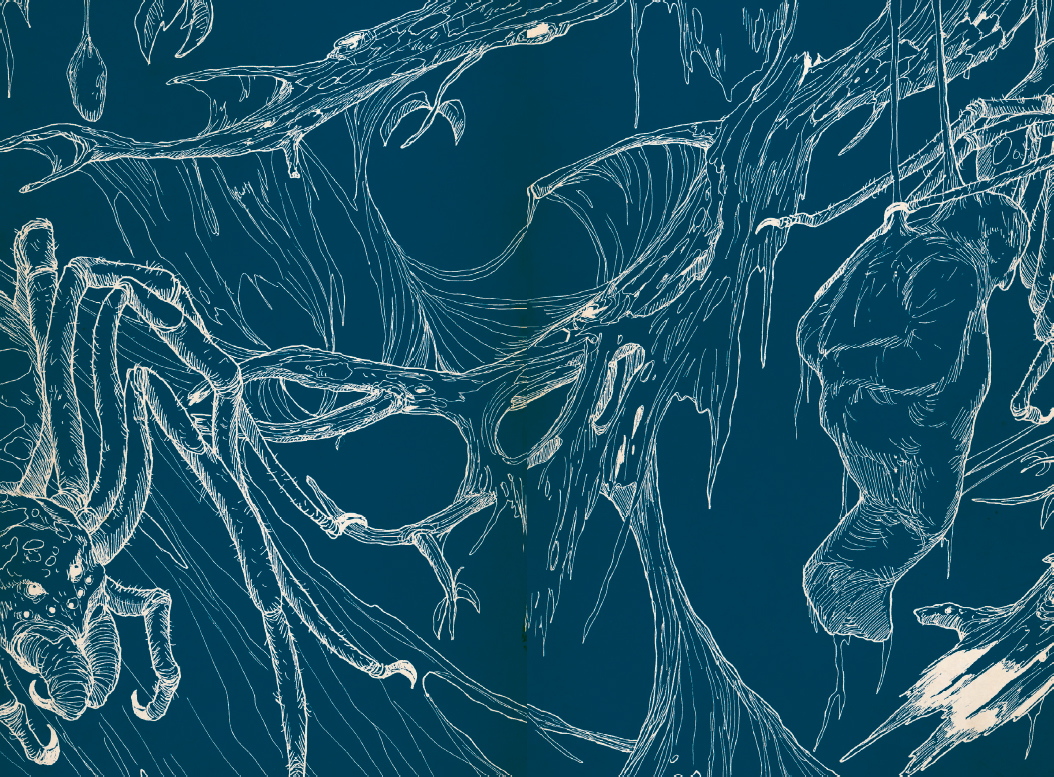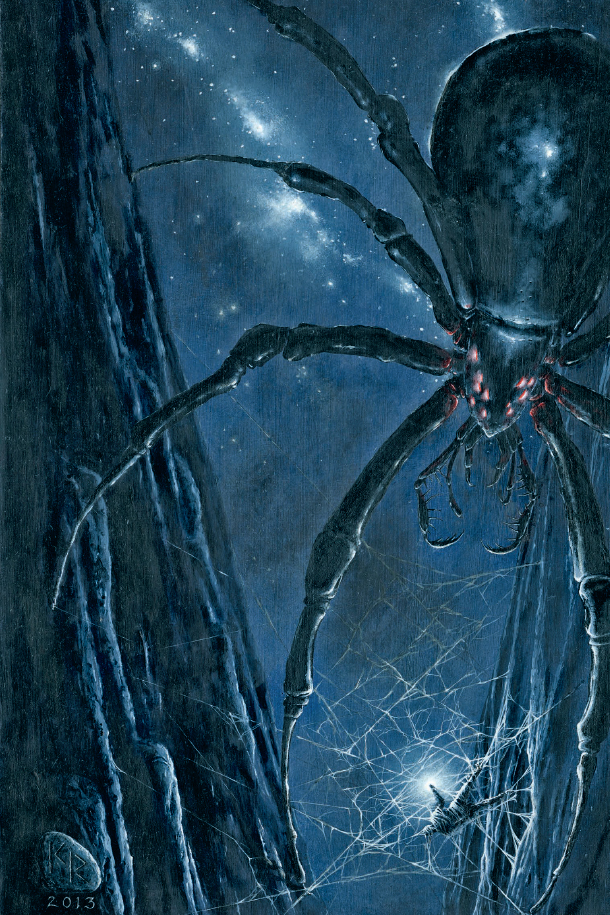UNGOLIANT, THE “DARK TERROR”

Ungoliant is a terrible primordial monster that takes the shape of a gigantic spider. Ungoliant’s name may translate simply as “Black Spider” or “Dark Terror Spider” in Sindarin, but her nature is more in keeping with Tolkien’s original name for her: Moru, meaning “Primeval Night”.
Perhaps only on the Indian subcontinent is there a mythological creation that comes close to Ungoliant. This is the eight-limbed being known as Kali, the “Black One”. Kali is the Hindu goddess of destruction, who has other names and forms, but who in her eight-limbed form is shown as dancing on the slaughtered bodies of her lovers.
Tolkien tells us that Ungoliant’s origin is unknown even to the Valar, but we may surmise that she may have been a corrupted Maia Spirit, or an entity that escaped the darkness of the Void and entered the world when “Melkor first looked down with envy” upon Arda. She may be an incarnation of the darkness of the Void itself. She is certainly the first entity to take on spider form and is known as the “Mother of All Spiders”.
By comparison, Kali, as the “Destroyer of the World”, demands blood sacrifices, intoxicating drink and ritual suicides. She dances to demonstrate “the power of death at the end of the world”, which ultimately cannot help but be a dance of self-annihilation.
It is difficult to imagine something as deeply unpleasant as J. R. R. Tolkien’s Ungoliant. She represents more than the simple physical horror of gigantic, unnatural arachnids bent on destruction and murder. What she does represent might be best described as a crawling, animated black hole in space, sucking up and annihilating all morality, all goodness.
Few cultures have really grasped the concept of non-existence as have Indian and Tibetan religions. In Tibetan painted scrolls, we find a “Master of Non-Being”, an entity similar to Kali and to Ungoliant, but in a male form that actually resembles Melkor the Dark Lord. Indeed, in this living form of darkness the identities of Morgoth and Ungoliant merge as one. This Tibetan Satan is a massive scorched black demon described as a “Black Man, as tall as a spear … the Master of Non-Existence, of instability, of murder and destruction”. And just as Ungoliant and Morgoth together extinguish the sacred Trees of Light in the Undying Lands, the Tibetan Master “made the sun and the moon die and assigned demons to the planets and harmed the stars”. Sometimes called the “Gloomweaver”, Ungoliant wove a web of darkness and horror that Tolkien describes as the “Unlight of Ungoliant”.

Ungoliant’s Daughters: the Spiders of Nan Dungorotheb
The tale of Ungoliant is an affirmation of the self-defeating nature of evil. In Tolkien’s Catholic Christian view – based on the theology of St Augustine – evil is nothing but the absence of good. Tolkien explained his understanding of evil in a letter: “In my story I do not deal in Absolute Evil. I do not think there is such a thing, since that is Zero.” Consequently, Ungoliant and Morgoth are destined to a self-devouring annihilation, a return to the Void, and the nothingness of “non-being”.


Ungoliant the Gloomweaver ensnares Morgoth the Dark Enemy